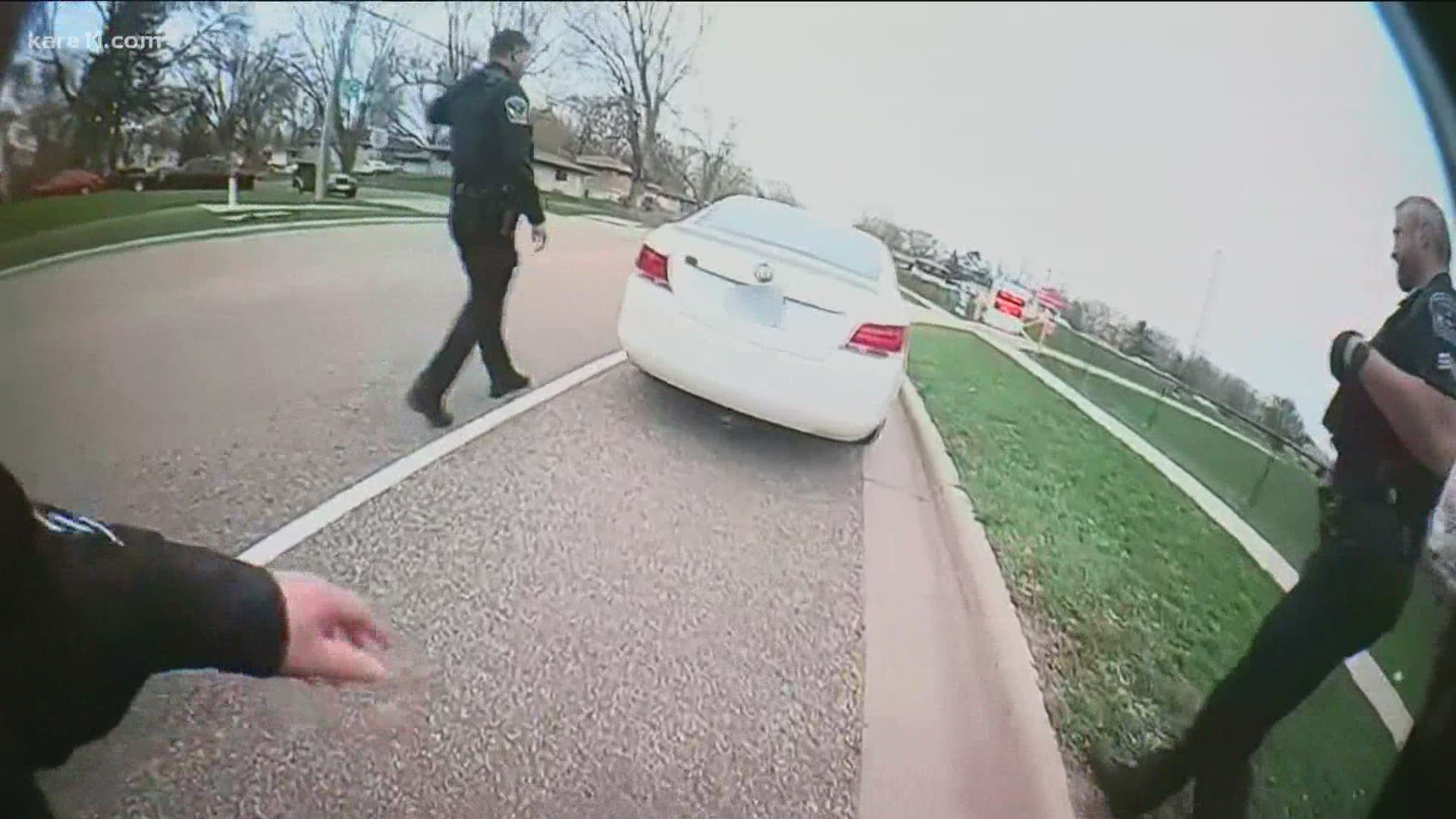MINNEAPOLIS — People throughout the world continue to pore over the body camera video showing the moments before Daunte Wright’s death.
And experts have also reviewed the traffic stop to try to understand what may have gone wrong during the encounter. Among their conclusions: it’s impossible to reach an irrefutable conclusion without knowing more about the context and both the officers’ and Wright’s thoughts during the incident.
“My first reaction was it was a terrible accident,” said Mylan Masson, former officer and director of the Law Enforcement Program for the State of Minnesota at Hennepin Technical College.
KARE 11’s Karla Hult asked Masson several questions about the encounter, based on what was captured on the body camera video.
HULT: “Was that ‘by the book‘ to actually put her physical hands on him?” [Referring to the moment Officer Kim Potter touched Wright’s arm].
MASSON: “I’m not sure how to explain that, but you possibly can. Now when the officer was trying to handcuff him and he moved away – I can’t see totally what’s going on – but if he starts to move away and the other officer comes up and touches him, or tries to keep him under control, that is a right command. And it is a right procedure.”
HULT: “These two other officers seemingly had it under control. Was there a need for a third officer to become physically involved?"
MASSON: “It could be that the other two officers didn’t know that there was a warrant out, and that maybe she was in the car, found out that there was a warrant and that there needed to be an arrest. And that’s why she came.”
HULT: “Would it be standard procedure for the officer to close the car door, to prevent Daunte from returning to his vehicle?”
MASSON: "Typically you would want to bring the suspect back to your own car or to the trunk of their car, that would be a good procedure, yes. Why they didn’t do that, or why they were doing that that way, they may have a reason that we don’t know about. But typically, what we would train, is that we would bring the suspect back either to the back of their car or to your squad car.”
HULT: “Was that necessary when he was in the car at that point?” [Referring to when Officer Potter reached into the car with what turned out to be her firearm].
MASSON: “I can’t say for sure. Typically we don’t want to enter the person’s car. We don’t want to put our hand in there because it could get shut by the door, and they could also grab whatever we’re using.”
Masson further stated that while this tragedy should result in a community-wide review of all traffic stops, she does point out that traffic stops have also prevented other crimes.
Meanwhile, another criminal justice expert suggests traffic stops should become the exception, not the rule.
“For me, it’s a case of ‘Can we use our better judgment to think of alternatives that we don’t have to go through this process right here, right now on this street during this traffic stop? Could we not just follow up later when the situation will be a lot calmer?’” said Dr. James Densley, a professor of criminal justice at Metropolitan State University.
Densley says his research – and even his British perspective – both suggest police departments and the greater community will be better served by a “hands off” or alternative approach to monitoring traffic infractions.
“There seems to be almost a compulsion among police to have to resolve the situation right there and then,” he said, adding, “I think to myself, OK, you now know that this individual has an outstanding warrant. But you have that person’s license plate, you have that person’s detail – because you’ve run them through the system. Is there not a way you could call for backup? Is there not a way you could slow a situation, follow up later, or at a time when it’s not going to be presented as more confrontational?”

